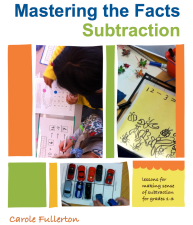Penguins! A game for the whole family
Happy Monday, all!
In a time when we find ourselves spending more time together, learning and thinking and playing together at home, I wanted to share a game that is appropriate for players of all ages. The game “Penguins!” is strategic and fun for the whole family!
To play you’ll need 2 regular 6-sided dice and some counters. They can be beans coloured on one side with a marker, or even some Cheerios and some Shreddies cereal. It’s a good idea to have a piece of paper and a pencil handy for calculations.
Here’s how to play (full instructions are included on the “Penguins!” game board):
 Roll the dice. Look at the numbers.
Roll the dice. Look at the numbers.
Find the sum and write it down. (add the numbers)
Find the difference and write it down. (subtract one number from the other)
Find the product and write it down. (multiply the numbers)
Now decide which one of these answers (the sum, the difference or the product) you will use. You can only pick one! Cover that number in your colour. Let your partner have a turn. If your sum AND your difference AND your product are taken, you can cover a penguin instead! Three in a line in your colour wins the game.
Have fun!
Carole
Sidewalk Chalk Meets Math Game Part 2: Testing the Limits
All right folks…
If you’re outside (or wish you were!) here’s another math game worth playing. It’s called Testing the Limits — and I’ve adapted it from BEAM Maths of the Month.
 This version is adaptable for all grade levels and can be played outside with sidewalk chalk (or indoors on paper!).
This version is adaptable for all grade levels and can be played outside with sidewalk chalk (or indoors on paper!).
To play, you need sidewalk chalk and a die (6-sided is fine, 10-sided is better!). You can play this game with a partner or alone. Here’s how…
ROUND 1: Roll the die 3 times and make a 3-digit number. Roll 3 more times and make a second 3 digit number. Put both numbers on the same number line. These are your “limits”.
ROUND 2: Now roll 6 more times. Make 2 different 3-digit numbers that fit within the limits from ROUND 1. Plot them on the same number line as ROUND 1. If you can do it, these new numbers become your new limits and you can move onto ROUND 3. If not… the game is over! Check out my sample game below.
Try using just two 2-digit numbers for younger students, or even decimal numbers for older students. Consider trying this with negative numbers, or even one negative and one positive to explore both sides of zero.
Enjoy! Stay safe…
Carole
Check out my online store for more free materials and problem-of the day resources!
Sidewalk Chalk Meets Math Game!
For those of you who are looking for ways to play together and build mathematical thinking and skills at the same time, consider this simple hopscotch game. You’ll need sidewalk chalk and a small stone. Children can play alone or in partners.
Go outside. Draw a large square on the pavement. Divide the square into at least 9 smaller squares, as shown below. This is called a matrix.
In each of the smaller squares record a number from 1 to 9. You can put them in any order. Now take a small stone and toss it onto the matrix. This is your starting square. From here, you must jump to the number that adds to give you 10.
In the game below, a child has thrown a stone onto the number 8. She stands on the number 8 then and has to jump to get to the number 2 — the missing part to get to 10.
 If there’s another child nearby, they should record the equation that matches the jump. (8 + 2 = 10)
If there’s another child nearby, they should record the equation that matches the jump. (8 + 2 = 10)
Player 2 (if there is one) takes his turn, throwing a stone and jumping from that number to the missing part to make ten. Player A records the equation.
The first player to hop on all the combinations is the winner. (And yes, landing on a 5 gets you a double jump!)
If you’re stuck inside, make the matrix on a sheet of paper and toss coins — or even Cheerios! — instead of jumping from number to number. Toss the first coin, say the number you’ve landed on, then say what the missing part is to get to the desired sum.
Of course you can change the numbers to suit the age and stage of the players…
the numbers to suit the age and stage of the players…
Consider a double-digit version (Get to 100!) or even a decimal version (Get to 5.0!). The sky’s the limit. I’ve included line masters for each of these games — and a blank grid, too — for you to use as inspiration.
Have fun… stay safe…
Carole

Math at Home
 To my teaching colleagues and parents everywhere…
To my teaching colleagues and parents everywhere…
We have always been partners in the mathematics education of our children — and now we find ourselves in a time that demands even more collaboration between home and school. Ensuring that our children have meaningful math learning experiences when we are inside and inundated with technological distractions can be difficult.
To that end I am inviting you to explore the following resource for parents of primary aged children. It was written years ago in a partnership between the BC Ministry of Education and a group of respected BC educators to support parents of young children to find and highlight mathematics in their daily lives. From sorting and counting to estimating and measuring, Math For Families has dozens of simple activities that families will love. The resource has also been translated into Chinese and Punjabi.
For more free resources, visit my online store at mindfull.ecwid.com.
And please, stay well.
Carole








